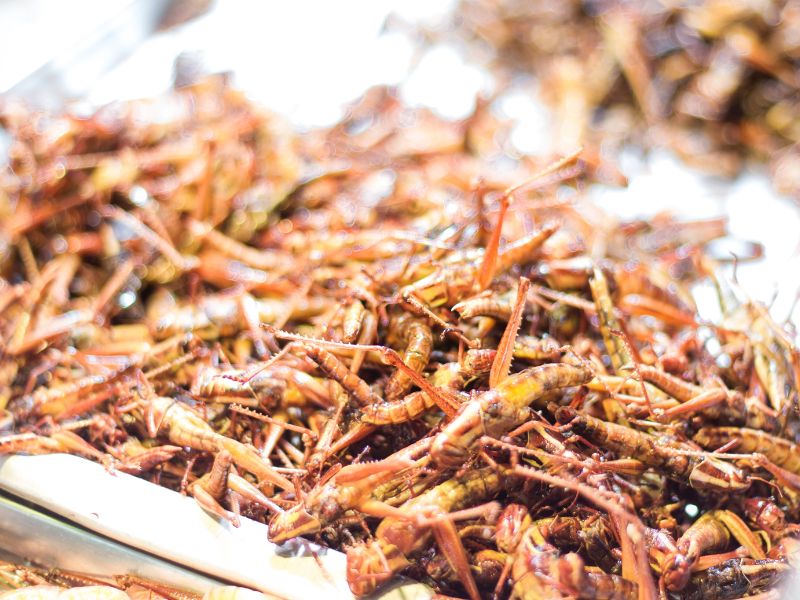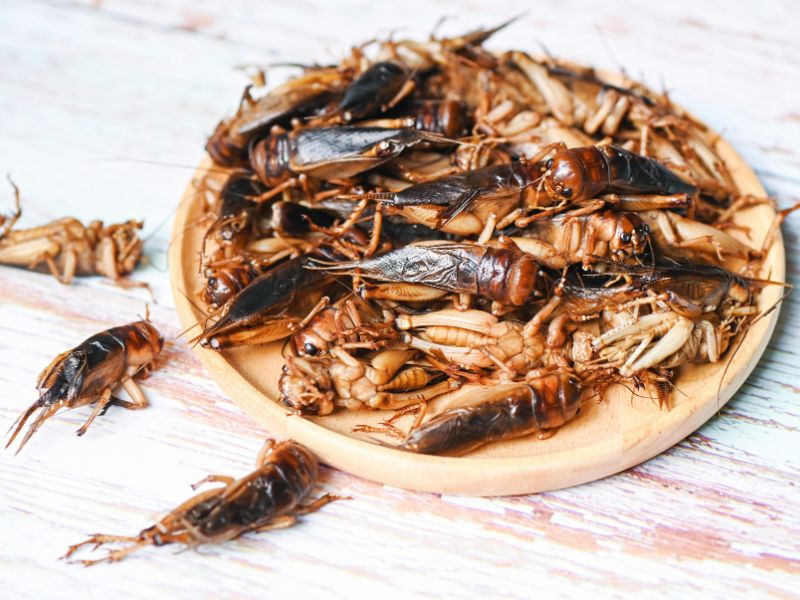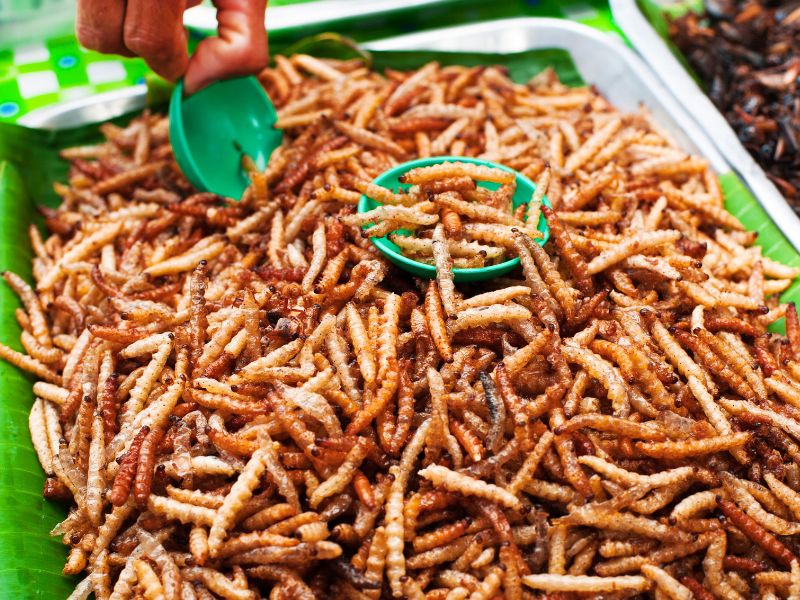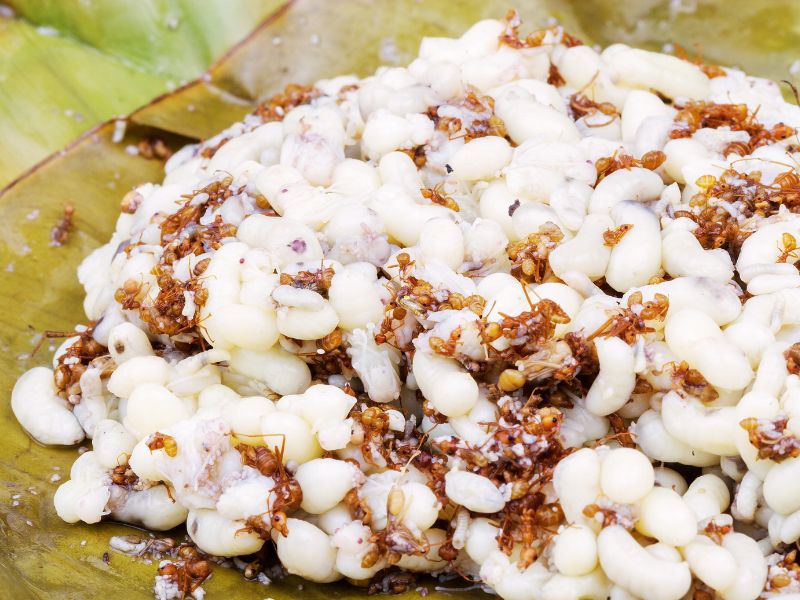As we stare down the barrel of an imminent food crisis fueled by exponential population growth and environmental challenges, alternative, sustainable, and nutritious food sources become pivotal. This article delves into an unconventional but promising candidate – edible insects. Drawing on centuries of cultural practice, coupled with impressive nutritional profiles, these tiny creatures may hold the key to global food security.
The Role of Insects in Global Food Security
Global Food Security Challenges
You may know the world is facing a food crisis. According to the United Nations, they expect the global population to reach 9.7 billion by 2050. Food production must multiply by 70% to meet the growing demand. However, climate change, water scarcity, and soil degradation make producing enough food to feed everyone challenging. As a result, many people are going hungry, and malnutrition is becoming more prevalent.
How Edible Insects Can Help Address These Challenges
One solution to the food crisis is to incorporate insects into our diets. Insects are a highly nutritious and sustainable food source. They are rich in protein, vitamins, and minerals and require less water and land to produce than traditional livestock. Insects can also be raised on organic waste, cutting the amount of food waste that ends up in landfills.
You can eat insects whole or ground into flour to make various foods, including snacks, baked goods, and protein bars. Insects can also be used as animal feed, which can help cut the environmental impact of livestock production.
Insects as a Food Source
Many cultures around the world have been eating insects for centuries. For example, in Thailand, crickets are a popular snack food, and in Mexico, chapulines (grasshoppers) are a traditional ingredient in many dishes. Insects are also a common food source in Africa, Asia, and South America.

One success story is the use of edible insects in Uganda. The Ugandan government has been promoting using insects as a food source to combat malnutrition. Insects such as crickets and grasshoppers are high in protein which farmers can farm small scale. The government has also provided training and resources to help farmers incorporate insects into their diets and sell them at local markets.
Nutritional Benefits of Edible Insects
When it comes to nutrition, edible insects offer some impressive benefits. They are a rich source of protein, vitamins, minerals, and healthy fats. Insects are also low in fat and high in fiber, making them an excellent option for those looking to maintain a healthy weight.
Commonly Eaten Insects
Here’s a look at the nutritional content of some commonly eaten insects:
| Insect | Protein (per 100g) | Fat (per 100g) | Carbohydrates (per 100g) | Fiber (per 100g) | Calories (per 100g) |
| Crickets | 20g | 5.5g | 0.1g | 3.2g | 121 |
| Mealworms | 14g | 12g | 2g | 1g | 206 |
| Grasshoppers | 20.6g | 6.1g | 3.7g | 3.2g | 121 |
| Ants | 13.9g | 3.5g | 17.7g | 1.2g | 105 |
As you can see, insects are a great source of protein, with some varieties containing even more protein than traditional meat sources. They are also low in carbohydrates. A perfect good option for those following a low-carb diet.

Insect Protein vs Other Traditional Protein Sources
Insects are also a great source of complete protein, containing all nine essential amino acids the body needs. Some studies have shown insect protein is more easily digestible than traditional protein sources like beef or chicken.
Health Benefits and Risks
In addition to their impressive nutritional content, edible insects may offer some health benefits. For example, they contain high levels of vitamin B12, iron, zinc, fiber, essential amino acids, omega-3 and omega-6 fatty acids, and antioxidants. However, it’s important to note that some risks may be associated with consuming insects, such as allergic reactions or the potential for contamination with harmful bacteria.

Environmental Impact of Insect Farming
Insect farming is gaining popularity as a sustainable alternative to traditional livestock farming because of its lower environmental footprint. However, it is essential to examine the potential adverse environmental impacts of insect farming and how we can mitigate them.
Sustainability of Insect Farming
Insect farming has the potential to be sustainable due to the low greenhouse gas emissions, land use, and water use associated with insect production. Insects also require less feed and produce less waste than traditional livestock, making them more efficient to produce.
Environmental Footprint of Insect Farming vs. Traditional Livestock Farming
A life cycle assessment of insect farming found that it has a lower ecological impact than traditional livestock farming regarding greenhouse gas emissions, land use, and water use. However, insect farming may have a higher impact in terms of energy use and eutrophication potential.
Potential Negative Environmental Impacts and Mitigation Strategies
Insect farming may negatively impact biodiversity if wild insects are used as feed or if escaped farmed insects become invasive species. To mitigate this, insect farmers can use locally sourced feed and implement measures to prevent escape.
Insect farming may also negatively impact water quality if you don’t manage insect waste correctly. To mitigate this, insect farmers can implement waste management practices such as composting or vermicomposting.
Cultural and Psychological Barriers
Cultural Attitudes Towards Eating Insects
Eating insects has been a part of many cultures for centuries, but they still consider it taboo in many Western societies. The cultural attitudes towards eating insects attribute to the lack of exposure and education about the benefits of consuming edible insects. In addition, the perception of insects as pests and disease carriers has contributed to the negative attitude toward eating insects.
The Yuck Factor
Psychological factors such as disgust and fear are often barriers to accepting edible insects. The “yuck factor” is often the issue to address. The disgust response is a natural human reaction that has evolved to protect us from eating harmful substances. However, it can also be influenced by cultural and social factors.

Author’s Note
Edible insects hold great promise as a sustainable, nutritious food source. Despite the challenges, including cultural biases and potential environmental impacts, they could play a crucial role in addressing global food security. As we continue to research and understand this resource, we need to address these challenges and adjust our perceptions to fully realize their potential.
Zoological Time Travel! Step into the world of Extinct Animals in 2023, meet the Rare Animals of the Amazon Rainforest, and celebrate the incredible comeback stories of Animals That Came Back from Extinction.

